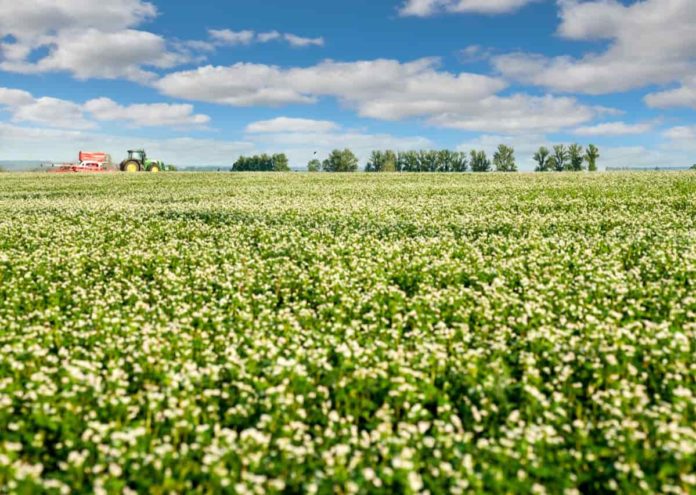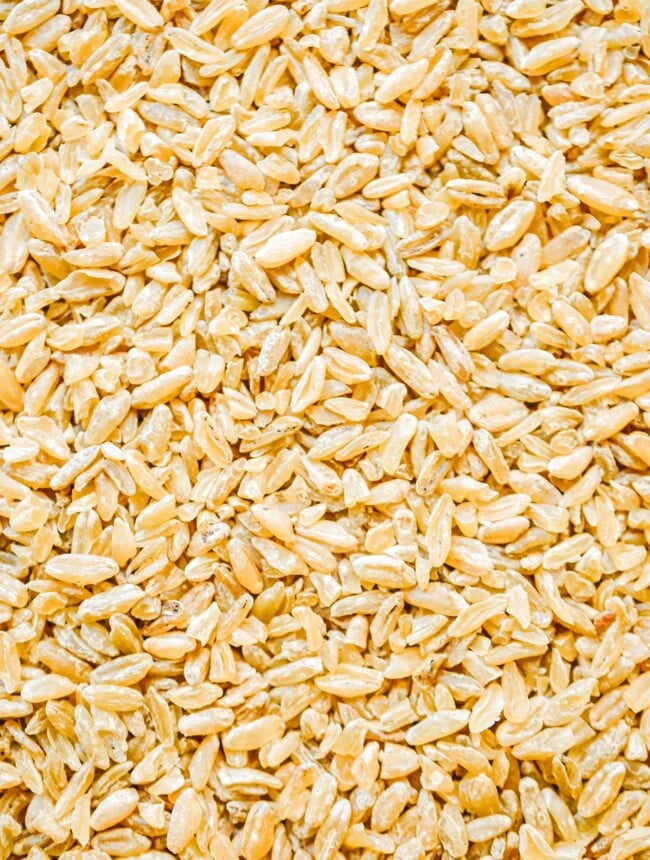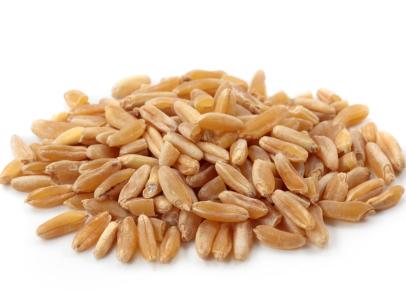7 High-Protein Grains To Add To Your Pantry

In today's health-conscious world, the importance of protein in our diets cannot be overstated. Protein plays a crucial role in building and repairing tissues, supporting immune function, and maintaining healthy hair, skin, and nails. While many associate protein with animal-based sources, there is a plethora of high-protein grains that offer a plant-based alternative for meeting your protein needs. Adding these grains to your pantry not only diversifies your culinary options but also provides a nutritional boost.
Grains have long been a dietary staple worldwide, and their versatility makes them an ideal choice for incorporating protein into various dishes. Whether you follow a vegetarian or vegan diet, or simply want to incorporate more plant-based protein into your meals, these high-protein grains offer an excellent solution. From salads and stir-fries to soups and side dishes, these grains can be incorporated into a wide range of recipes to elevate both the taste and nutritional content of your meals.
This article will introduce you to seven high-protein grains that deserve a spot in your pantry. Each grain possesses unique characteristics, flavors, and nutritional profiles, making them valuable additions to your diet. We will explore grains like quinoa, known for being a complete protein source, and amaranth, which offers an array of essential nutrients. Buckwheat, freekeh, teff, kamut, and spelt will also be featured, showcasing their protein content and culinary versatility.
By incorporating these high-protein grains into your pantry, you can explore new flavors, experiment with different recipes, and enjoy the benefits of increased protein intake. So, let's dive into the world of grains and discover the protein-packed options that can revolutionize your meals.
7 High-Protein Grains to Add to Your Pantry
- Quinoa
- Amaranth
- Buckwheat
- Freekeh
- Teff
- Kamut
- Spelt
1. Quinoa

Quinoa is a well-known grain that has gained immense popularity due to its high protein content. This ancient grain is a complete protein source, meaning it contains all nine essential amino acids that the body needs. With approximately 8 grams of protein per cooked cup, quinoa is an excellent choice for vegetarians and vegans looking to meet their protein requirements. Additionally, quinoa is rich in fiber, iron, magnesium, and phosphorus. It has a nutty flavor and a slightly chewy texture, making it a versatile ingredient in salads, grain bowls, and even as a substitute for rice or pasta.
2. Amaranth

READ ALSO » 8 Sought-after Soft Skills Employers Want To See On Your Resume
Amaranth is another high-protein grain that has been cultivated for thousands of years. It is gluten-free and provides around 9 grams of protein per cooked cup. Amaranth is also packed with essential nutrients like iron, magnesium, phosphorus, and manganese. This grain has a unique texture, similar to couscous, and a slightly peppery flavor. It can be cooked as a hot cereal, added to soups, or used in baked goods like muffins and bread. Amaranth can also be popped, creating tiny grains that are delicious as a topping for salads or yogurt.
3. Buckwheat

Despite its name, buckwheat is not actually related to wheat and is gluten-free. It is a versatile grain with a rich, nutty flavor and a high protein content of approximately 6 grams per cooked cup. Buckwheat is an excellent source of fiber, manganese, magnesium, and phosphorus. It is commonly used in dishes like soba noodles, porridge, and pancakes. Buckwheat groats can also be ground into flour, making it a fantastic option for gluten-free baking.
4. Freekeh

Freekeh is an ancient grain that is gaining popularity for its unique smoky flavor and impressive nutritional profile. It is made from green durum wheat that has been harvested while still young and then roasted or toasted. Freekeh contains approximately 12 grams of protein per cooked cup and is a good source of fiber, iron, magnesium, and zinc. With its slightly chewy texture, it adds a delightful crunch to salads, pilafs, and soups.
5. Teff

Teff is a tiny grain that is native to Ethiopia and has been a staple in Ethiopian cuisine for centuries. It is gluten-free and provides around 7 grams of protein per cooked cup. Teff is rich in fiber, iron, calcium, and vitamin C. This grain has a mild, nutty flavor and can be cooked as a porridge, added to stews, or used to make injera, a traditional Ethiopian flatbread. Teff flour is also commonly used in gluten-free baking.
6. Kamut

Kamut, also known as Khorasan wheat, is an ancient grain that is believed to have originated in the Middle East. It has a rich, buttery flavor and provides approximately 10 grams of protein per cooked cup. Kamut is an excellent source of fiber, selenium, manganese, and magnesium. This grain has a chewy texture and can be used in a variety of dishes, including salads, pilafs, and soups. It can also be ground into flour for baking bread, cookies, and other baked goods.
7. Spelt
Spelt is an ancient grain that is a close relative of wheat. It has a slightly sweet, nutty flavor and provides around 10 grams of protein per cooked cup. Spelt is high in fiber, manganese, phosphorus, and niacin. This grain is commonly used as a substitute for wheat in baking and can be found in bread, pasta, and crackers. It can also be cooked and used in salads, risottos, and grain bowls.
In conclusion,Incorporating high-protein grains into your pantry is an excellent way to enhance the nutritional value of your meals. The seven grains mentioned in this article quinoa, amaranth, buckwheat, freekeh, teff, kamut, and spelt offer not only a substantial amount of protein but also a range of other essential nutrients. From their versatility in cooking to their unique flavors and textures, these grains can be used in various dishes to add nutrition, depth, and a satisfying element to your meals. By diversifying your grain choices and incorporating these high-protein options, you can enjoy a well-rounded and protein-rich diet while reaping the benefits of their nutritional goodness
READ ALSO » 10 Mistakes You Don’t Want To Make In Your 20s
